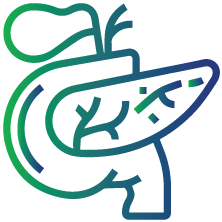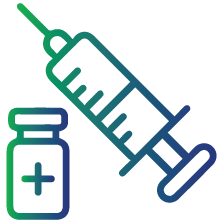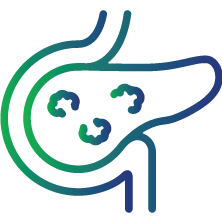
Insulin (Fasting)
Insulin (Fasting)
Insulin (Fasting) test is used to determine the amount of insulin in your blood after fasting for a minimum period of 8 hours. Insulin hormone aids in the transfer of blood sugar, also known as glucose, from the bloodstream to the cells. You get glucose from the foods and beverages you consume.
Insulin is essential for maintaining the proper levels of glucose. Serious health issues may result from too high or too low glucose levels. Increased insulin levels are associated with insulin resistance and may also increase the risk of cancer, Alzheimer's, and heart disease.
Thus, getting your Insulin (Fasting) test done is recommended to measure the amount of insulin in your body and how your body processes glucose to diagnose diseases such as diabetes
Symptoms of Hypoglycemia
You might require an Insulin (Fasting) test, if you experience symptoms of hypoglycemia (low blood sugar) such as:

Excessive sweating

Trembling

Irregular heartbeat

Confusion

Dizziness

Extreme hunger

Blurry vision
What is Insulin (Fasting) test used for?
The Insulin (Fasting) test is performed:

The Insulin (Fasting) test is performed:

To determine whether insulin is being properly produced by the pancreas

To determine whether hyperglycemia (high blood sugar) is caused due to insulin resistance in cells

To determine whether insulin supplementation is required

To determine the presence of insulin-producing tumors (insulinomas) in the pancreas
Test preparation
Prior to an Insulin (Fasting) test, it is important to fast for 8 -12 hours. Only drinking water during this time is recommended. The patient is advised to not drink any beverages in the morning, such as tea, coffee, or milk, until the sample collection is completed
Interpretation of the Test Results
The units of measurement for the results are micro-international units per milliliter (uU/mL)
|
Parameters |
Normal Reference range |
|
Insulin, Serum, Fasting
|
2.00 - 25.00 |
Deviation from normal levels indicate the following:
· If your insulin levels were higher than the normal levels, it may be indicative of conditions such as type 2 diabetes, insulin resistance, hypoglycemia, Cushing's syndrome (adrenal glands disorder), an insulinoma (pancreatic tumor), etc.
If insulin levels were lower than the normal levels, it may be indicative of conditions such as hyperglycemia (high blood sugar), type 1 diabetes, pancreatitis (inflammation of the pancreas), etc
FAQs
How is the sample collected for an Insulin (Fasting) test?
A blood sample is taken from a vein in the arm using a fine needle. This procedure typically takes no longer than five minutes
A blood sample is taken from a vein in the arm using a fine needle. This procedure typically takes no longer than five minutes
This test involves negligible risk. There might be slight soreness or tenderness around the site where the blood was drawn. Rarely, the site can become infected
What is the turnaround time (TAT) for the results of an Insulin (Fasting) test?
Insulin (Fasting) test result is usually available within the same day. However, it could take longer at times
Can Insulin (Fasting) test be taken at home?
No, although glucose levels can be monitored at home, insulin tests are usually performed by healthcare professionals in a hospital /diagnostic centre / laboratory using specialized instruments
What is insulin resistance?
The pancreas secretes a hormone called insulin, that facilitates the uptake of blood glucose into the muscle, liver, and fat cells, where it is used as an energy source. Cells in your muscles, liver, and fat are unable to readily absorb glucose from your blood due to a condition known as insulin resistance. As a result, your pancreas produces more insulin allowing glucose to enter your cells easily. Your blood glucose levels will remain within a healthy range as long as your pancreas can produce enough insulin to overcome your cells’ inadequate response to insulin

